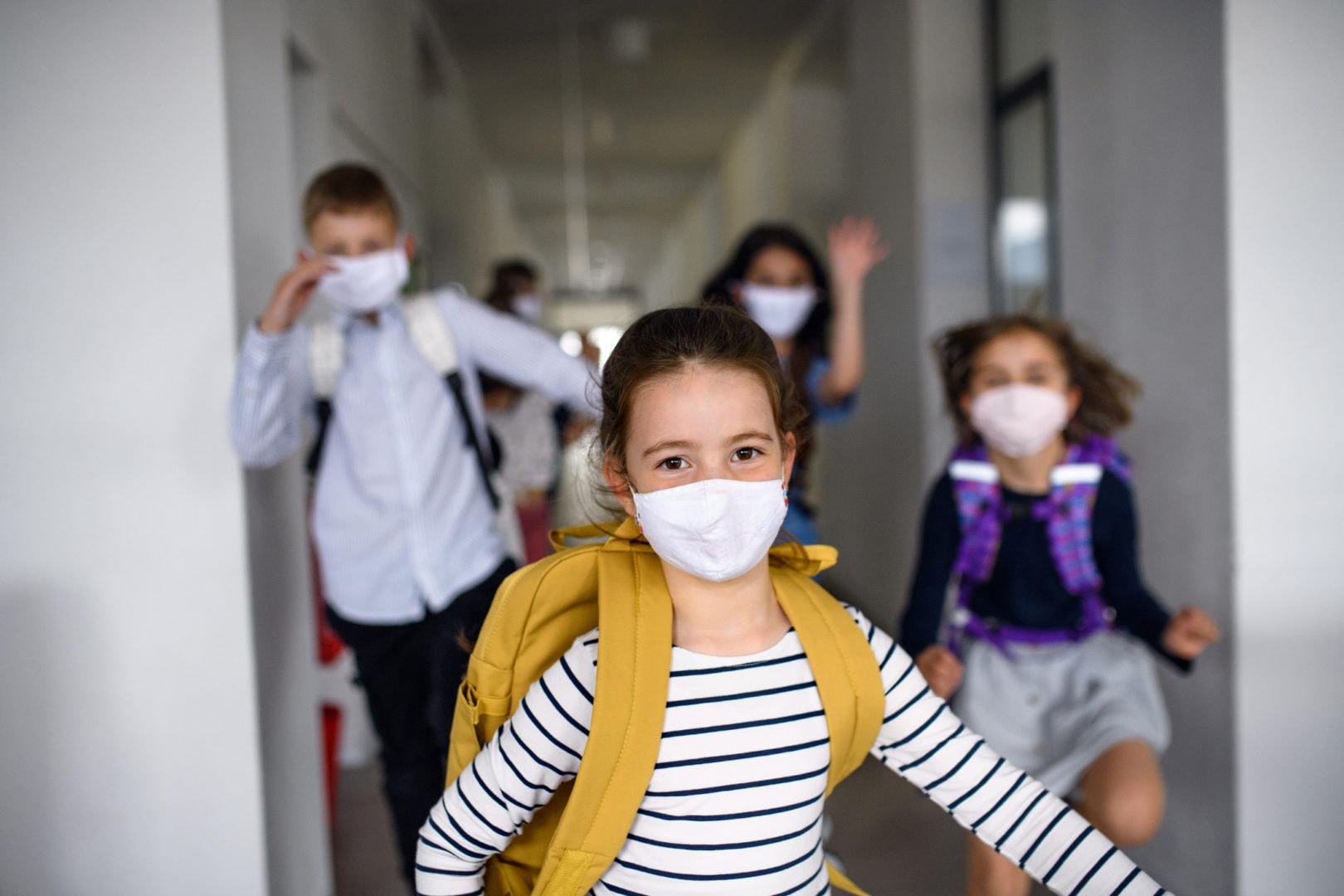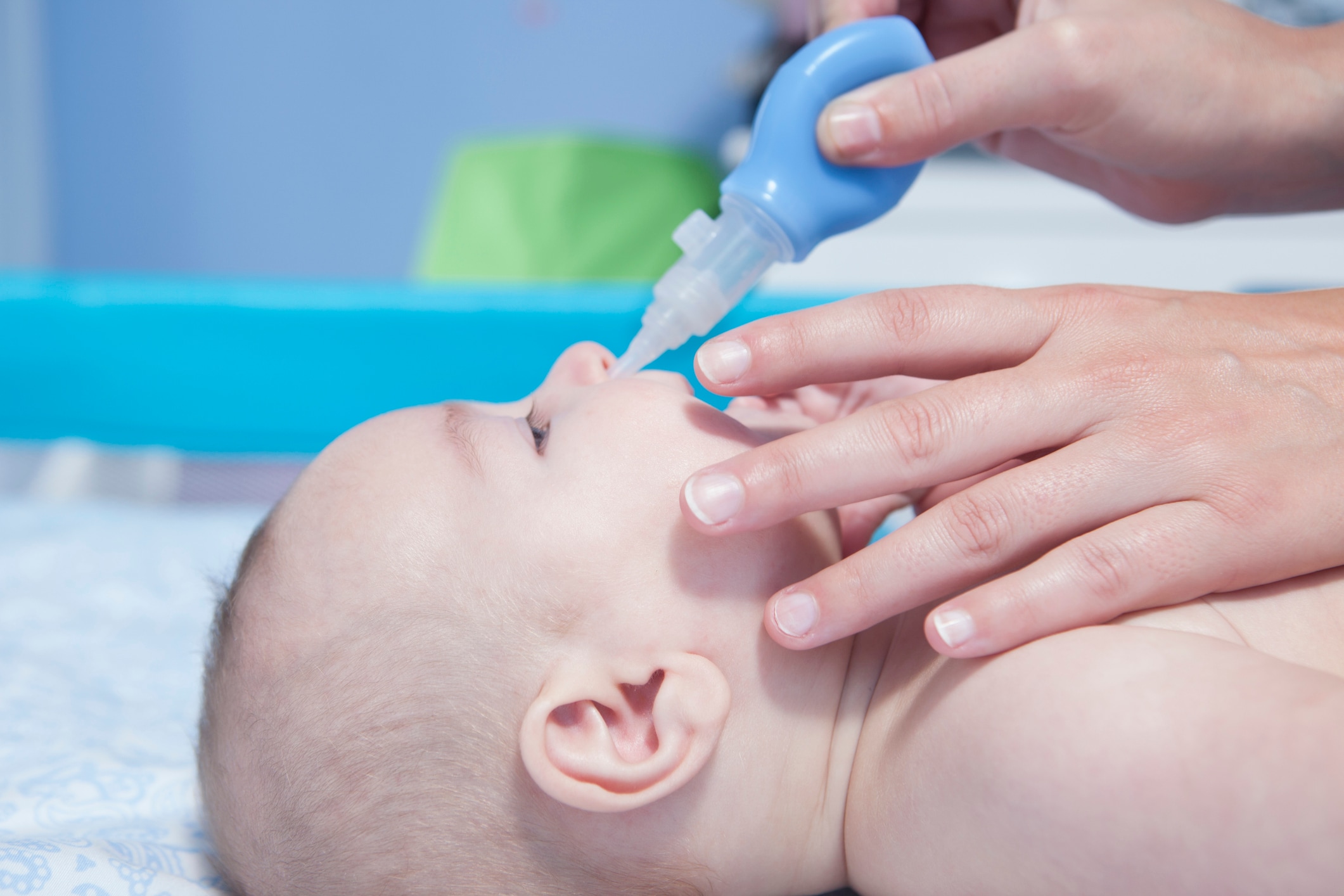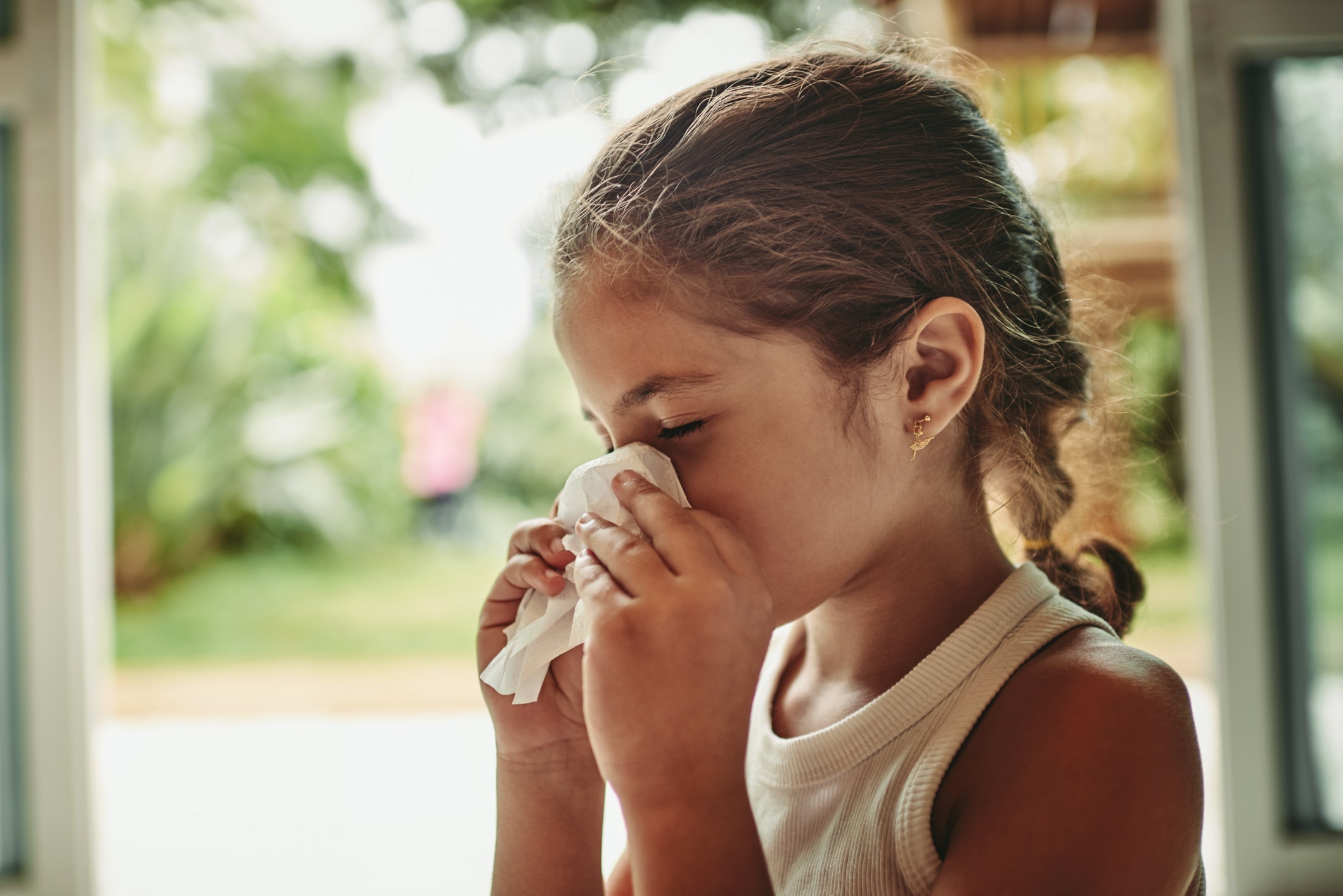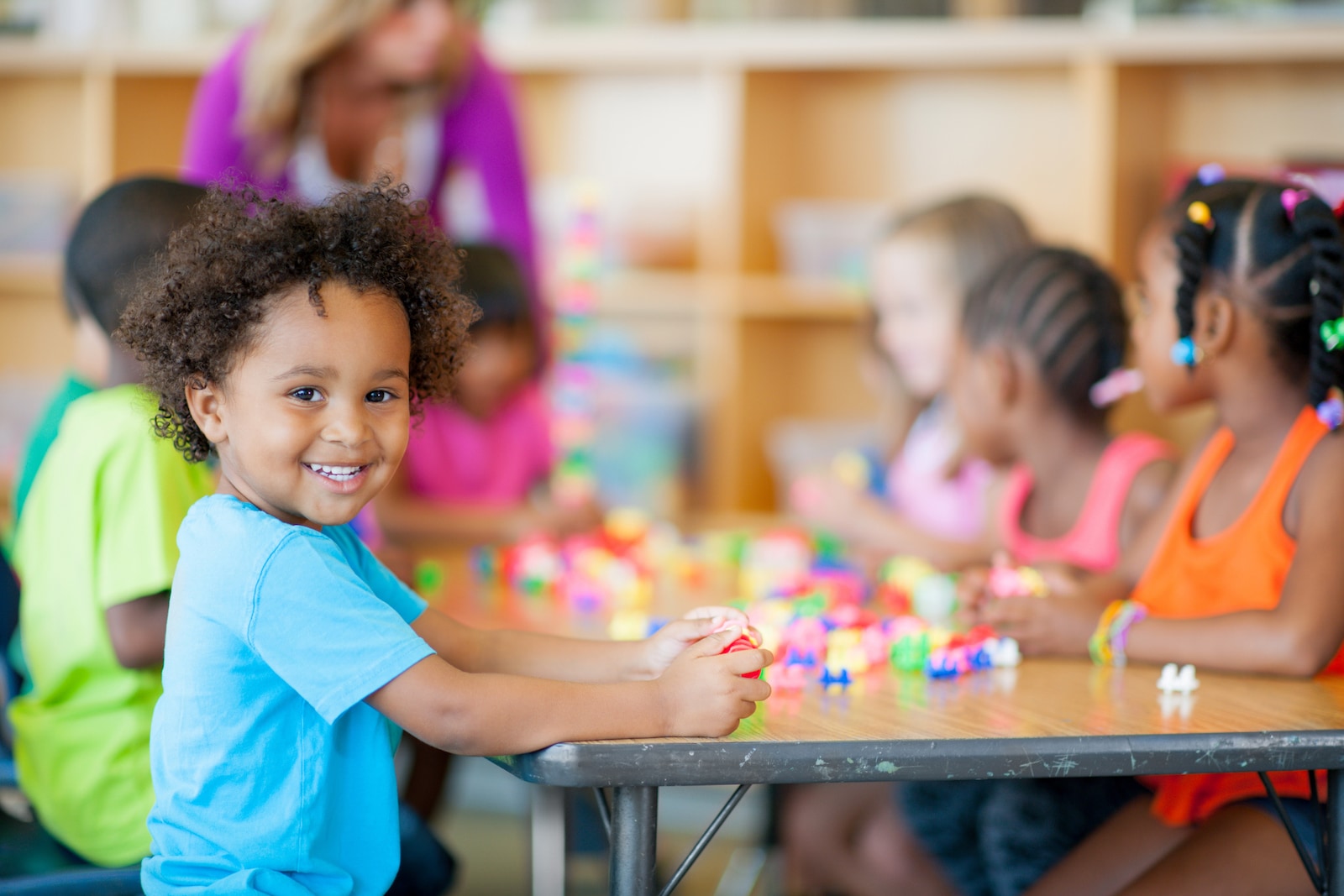While the 2020-21 school year — however it looks — is likely going to provide parents with more kid-free time than the last few months, school alone isn’t going to cut it for many working moms and dads, making flexible and supplemental child care necessary. Figuring out the right type of child care has always been an undertaking for families, but now, in addition to weighing considerations like cost, benefits and logistics, there’s the added layer of a pandemic. Parents aren’t just looking to keep their kids occupied and engaged while they’re at work come fall; they want to keep their families safe.
-
Child care bubble, pod or cohort
-
Work-at-home or stay-at-home parents
“There are a number of things parents should keep in mind,” says Dr. Sara Siddiqui, a pediatrician and clinical assistant professor in the Department of Pediatrics at NYU Langone’s Hassenfeld Children’s Hospital in New York. “For starters, the guidelines set forth by the American Academy of Pediatrics (AAP) and Centers for Disease Control (CDC) are just that: guidance. Each area will have to take outbreaks in their location into account and follow local recommendations.”
That said, before making any child care decisions, make sure to check with local and state authorities for the most up-to-date information, as there may be additional requirements, limitations or considerations for your area and even between child care centers and school districts.
“Also, while we’re still in the early stages of COVID and the data is changing regularly,” says Siddiqui, “from what is known thus far, the vast majority of children do not develop severe disease, and kids aren’t a major source of virus transmission.” However, it is worth noting that, despite new research showing kids are typically not superspreaders of the virus, it’s still possible for them to shed the virus. The CDC has said that children “can still pass this virus onto others who may be at higher risk, including older adults and people who have serious underlying medical conditions.”
Not sure what to do about child care once school starts up? Thankfully, there are many flexible child care options available, and it’s just a matter of finding the one that is best for your family. Here, experts and parents weigh in on the benefits and risks of different back-to-school child care options.
1. After-school programs
Find an after-school program
Benefits:
In addition to being one of the more cost-effective child care options, many after-school programs provide transportation (or eliminate the need for it), which cuts down on logistics. For instance, the YMCA in Westfield, New Jersey gives parents the option of having their kids stay at their respective school for their after-care program, allowing them to attend clubs, or they can be bused to their facility. After-school programs also often provide kids with unique opportunities they may not get elsewhere. “Whichever after-school option parents go with, kids are offered homework assistance, arts and crafts, science, reading, board games and time outside,” says Susan Morton, Vice President of Operations at the Westfield Area Y. “And if they opt for after-care at the facility, kids can partake in programs, such as swim lessons, rock climbing, soccer and other sports when mom and dad are still at work.”
What the experts say:
Before signing your child up for an after-school program, inquire about the safety precautions they’re taking to prevent the spread of COVID. (Also, the sooner you speak to the program director, the better since many facilities, including the Y, are currently limiting the amount of children they allow in each space and potentially the number of kids they can accept into a program.)
According to Siddiqui, these are safety precautions child care centers should be taking:
-
Encourage students and staff to stay home when not feeling well.
-
Conduct daily temperature checks of staff and children, preferably with touchless thermometer and while wearing proper personal protective equipment (PPE).
-
Keep class sizes as small as possible.
-
Clean surfaces of dirt, then disinfect (CDC recommends “routine cleaning of frequently-touched surfaces”).
-
Promote physical distancing — 42-44 square feet per child — when possible.
-
Have employees wear face masks, face shields, goggles and gloves when preparing food.
-
Enforce respiratory etiquette, such as coughing into sleeve or tissue (and discarding tissue after, followed by washing hands).
-
Enforce hand hygiene (soap and water is preferred to hand sanitizers for smaller children since they can be toxic if ingested).
-
Know how to refer and perform testing via state’s guidelines.
2. Before- or after-school nanny
Find a part-time nanny
Benefits:
For parents who require gap coverage for before- and after-school care, a morning or afternoon helper may be a good choice. “These helpers can assist with the before or after-school routine and with getting the kids up, ready, out the door and back home again and settled into the after-school routine,” explains LaRowe. Kathy Weber, a 15-year veteran nanny in Winfield, Illinois had an agreement with a family where, in addition to driving the kids to and from school, she tended to family tasks during the day. “After dropping the kids at school, I would run a few errands, fold laundry or do some organizing,” she says.
What the experts say:
Again, this type of situation involves trust. Even though a before- or after-school nanny is spending less time with the kids than a full-time one, a conversation is still warranted upfront to lay everything out. “In addition to setting up expectations about things like staying home when the babysitter doesn’t feel well, families can provide guidance regarding disinfecting and cleaning measures that are in alignment with CDC guidelines,” notes LaRowe. Also, according to the Equal Opportunity Commission, it’s OK to ask household employees about health relating to COVID, ask to see a doctor’s note if they’ve been sick and even take their temperature.
3. Full-time nanny
Find a full-time nanny
Benefits:
If you’re looking for in-home child care from a dedicated professional, a nanny is a great solution. With a nanny, all your child’s activities and meals, among other details, can be tailored to your family’s specific needs. In fact, many nannies are willing to assist children with their distance learning needs, too.
Then, depending on your agreement, tasks like house cleaning, meal prep and errand-running can be part of the deal. The cost of a nanny varies, but generally, they’re more expensive than day care or after-school programs. However, for many families, this extra cost is worth it just to have individualized, hands-on care for their child in a safe, home environment.
What the experts say:
Technically speaking, having one person care for your child is exposing them — and your family — to fewer germs than a day care center environment with multiple children and teachers. But if your caregiver is not following CDC health protocols when they’re off the clock, they can be a risk. Ultimately, it comes down to trust. “While parents can’t tell nannies what they can’t do during their off hours, they can tell their nanny that if they wish to continue working, they must engage in activities that align with the CDC guidelines related to coronavirus,” explains Michelle LaRowe, former executive director of the International Nanny Association and author of “Nanny to the Rescue.” LaRowe recommends making expectations clear right off the bat with a detailed safety conversation that can start off with a question as simple as: “What are you doing to be safe?”
How ambitious you want to get with precautions ultimately is up to you, but again, it’s a conversation that should be had upfront. For instance, expected cleaning protocols should be discussed, as well as whether or not you expect the nanny to wear a mask, which Siddiqui recommends. “While we still aren’t sure of the transmission of COVID-19 from children to children or children to adults, we do know that it may be less than adults to adults,” Siddiqui says. “So, wearing a mask would be advised when the babysitter is around other adults in the home.”
4. Nanny share
Find a nanny share
Benefits:
In a nanny share arrangement, families join forces and hire the same nanny, who either cares for the children at one designated house, or the families take turns at each home. Another option is hiring a nanny who brings their own kids to work. Regardless of the nanny share setup, they’re more affordable than having one full- or part-time nanny. “This is a win-win for families with children who are happy to have extra socialization for their child in the care of an experienced nanny who takes on all tasks related to the children,” notes LaRowe. “The nanny gets to bring her child and avoid the costs of child care, which means she’ll usually accept a little lower of an hourly rate.”
What the experts say:
“Communication would be a key part in this type of child care,” says Siddiqui. “Families need to be on the same page in terms of things like frequent hand washing, proper respiratory etiquette and mask-wearing for adults and older children in the homes. Also, adults, when crossing paths, should still maintain social distance.”
5. Day care centers
Find a day care center
Benefits:
For younger kids, day care is a good option that provides a structured environment and socialization. One study published in the Journal of Epidemiology and Community Health found that kids who attended a high-quality child care center early on had lower rates of emotional, conduct, relationship and attention problems later in life, compared to those who were watched by a family member or sitter. Also, day care works with almost every parent’s work schedule since they’re typically open during regular work hours. “We initially started off with a nanny, but after encountering a few scheduling snafus and sick days, which of course the nanny was entitled to, my wife and I decided to put our daughter in day care,” says mom of one Lauren Matthews of Buffalo, New York. “Everyday we — and our daughter — know exactly what to expect with our child care.”
What the experts say:
According to Siddiqui, day cares should use the same precautions as after-school programs (see above), in addition to the following:
-
Have employees wear face masks, face shields, goggles and gloves for preparing food and changing diapers (using different gloves for each task and always washing hands in between).
-
Physically distance children six feet away when eating and napping.
-
Set up napping with head-to-toe placement.
It’s also worth noting that some day cares may be requiring daily wellness checks for every child and asking kids to wear masks. For example, in Missouri and Pennsylvania, they are recommending that any child over the age of 2 wears a mask at day care when possible.
6. “Bubble” with another family to share child care and socialize
Benefits:
Something that was in no one’s vernacular before the start of COVID? Quarantine bubbles. With this type of setup, people are isolated for a minimum of two weeks and then expand their “bubble” or “pod” of people they spend time with. For families with one or more parent who stays at home or who has a flexible work schedule, this could be (a wildly cost-effective) option since no professional care is involved.
What the experts say:
In order for this to work in relation to child care, at least one person needs to be available to tend to the children (also, if there’s just one person, is it feasible, and do they want to always tend to the kids?). In a recent paper, sociologists at Oxford wrote that creating a bubble “reduces the number of contact partners rather than number of interactions, which is particularly important when contact is necessary for psychological well-being.”
Keep in mind that if some members of a pod work outside the home, they’re increasing exposure potential in the space. “This could be an option if both families know each other well and work in lower risk environments,” notes Siddiqui.
7. Family assistant
Find personal services
Benefits:
While it won’t directly take care of child care, having someone who runs errands and completes household tasks for the family can free up a good chunk of time for parents. “Family assistants can be helpful in that they tackle household responsibilities, such as grocery shopping and errand running,” explains LaRowe. “Changing it up to outsource household duties gives parents more time with their kids each day.”
What the experts say:
So long as everyone follows recommended protocols when (and if) they’re interacting, a family assistant can be one of the safer options. According to the Mayo Clinic, “There’s no evidence of anyone contracting the virus that causes COVID-19 after touching food containers and food packaging.” The CDC also notes that coronavirus is mostly spread through respiratory droplets, and it’s “unlikely to be spread from mail, products or packaging.” Note that it is possible to get COVID by touching a surface or object that has the virus on it and then touching your mouth, nose or eyes, but “this is not thought to be the main way the virus spreads.” Put another way: If you’re washing your hands and not touching your face, you lower your risks considerably.
8. Work-at-home or stay-at-home parents
Benefits:
While this certainly isn’t an option for everyone, some parents have decided to leave their job altogether or devise a work-from-home schedule with their employer to minimize their family’s risk of exposure. “It’s not ideal, but right now my husband and I are working from home with no child care for the foreseeable future,” says mom of two Jillian Tennant of New York City. “As things change with the pandemic, we’ll readdress things, but right now, we’re just not comfortable having child care or going to the office.”
What the experts say:
When you’re sitting in an office all day, working from home may sound like the dream, but in actuality, for many, it’s not. A 2017 study from the United Nations reported that 41% of remote workers claimed to have high stress levels, compared to 25% of office workers. (A possible reason being the blurred line between work-home life.)
If working parents keep in mind that this situation is temporary, it may offer a little comfort. “I miss going to work,” says Tennant. “I miss listening to podcasts on my commute. But I just keep telling myself that someday things will go back to the way they were and that helps.”
As schools reopen and parents get back to work, child care is going to be essential for many — and, ultimately, there’s no right answer for everyone. However, if you do the research and weigh the options, you’re sure to make the best choice for your family.





